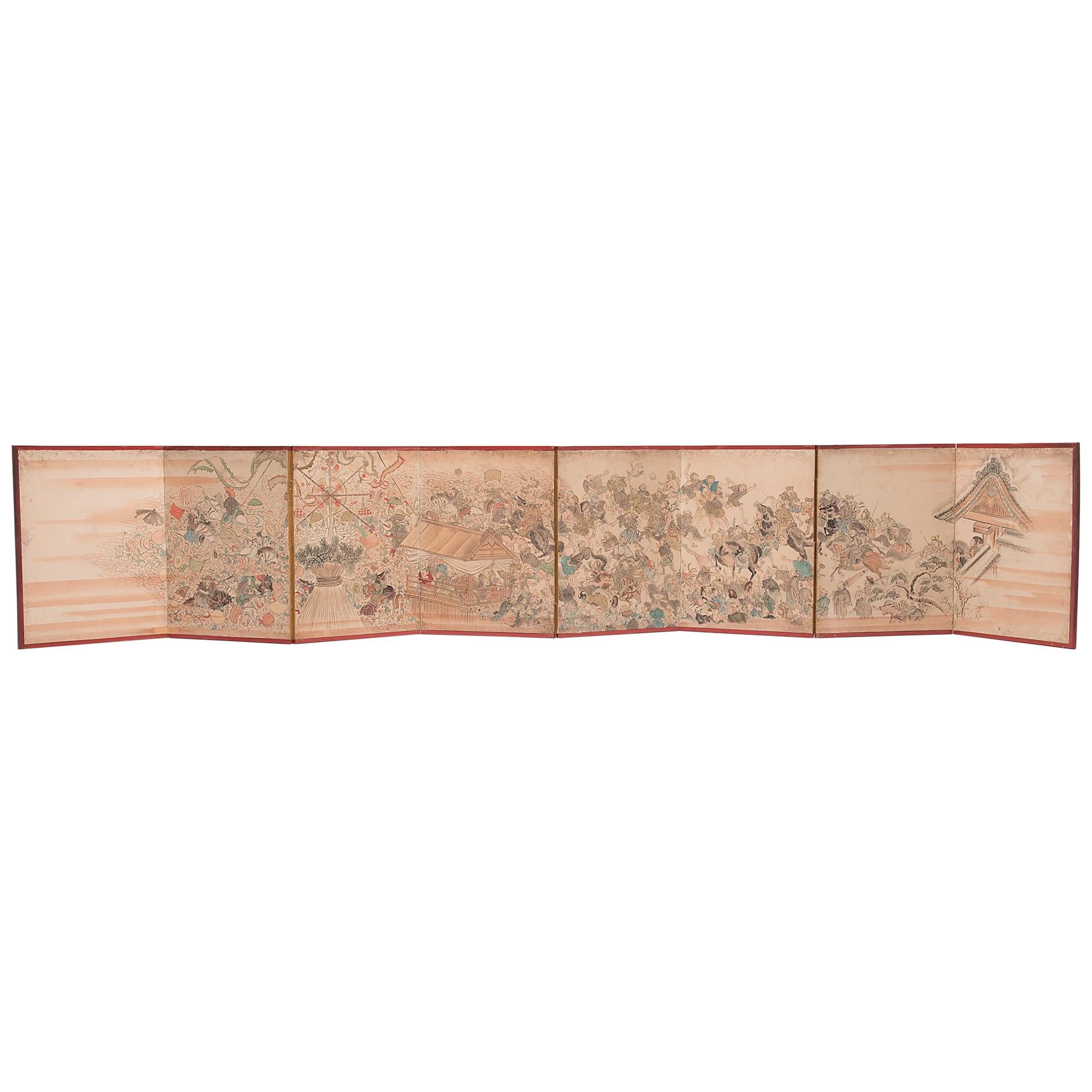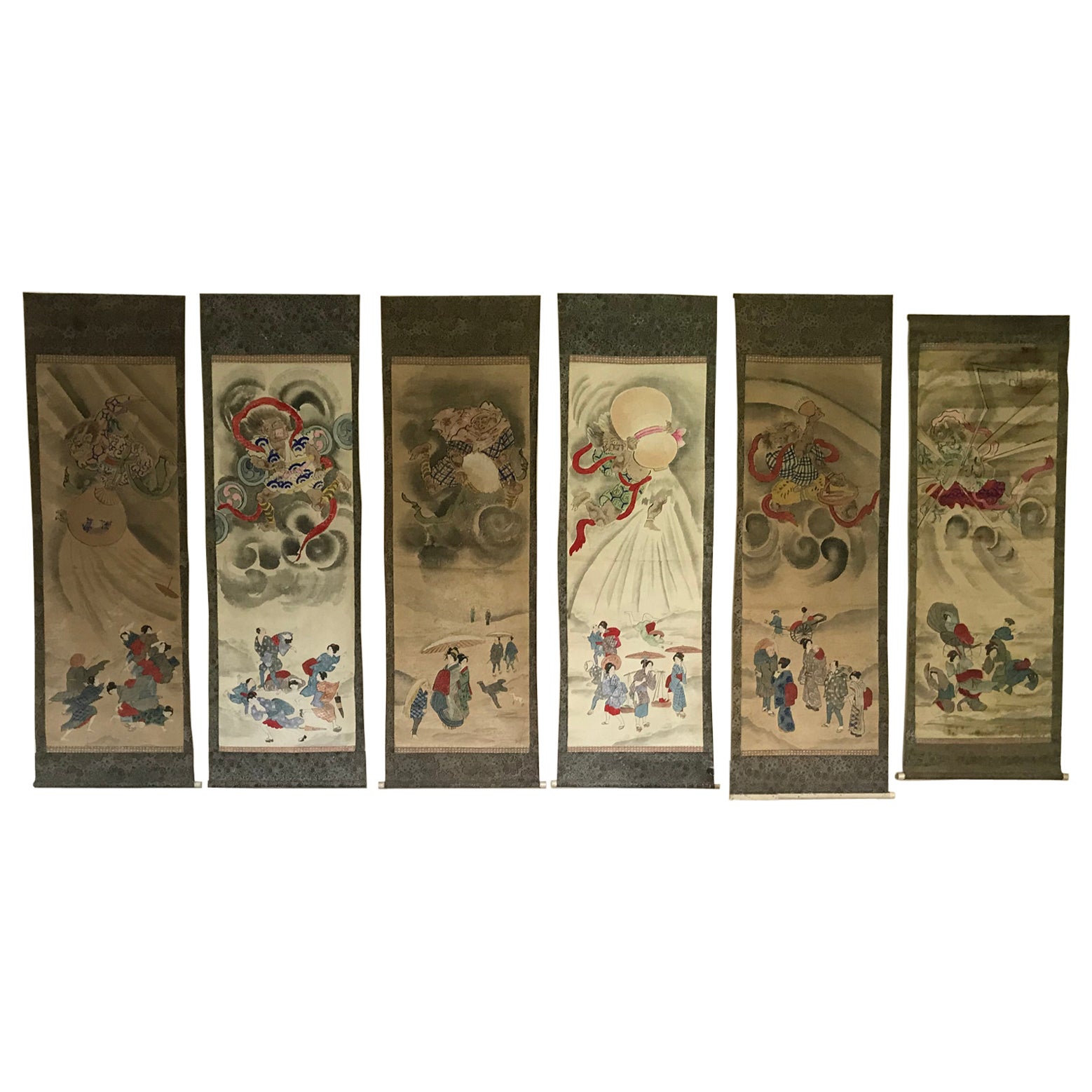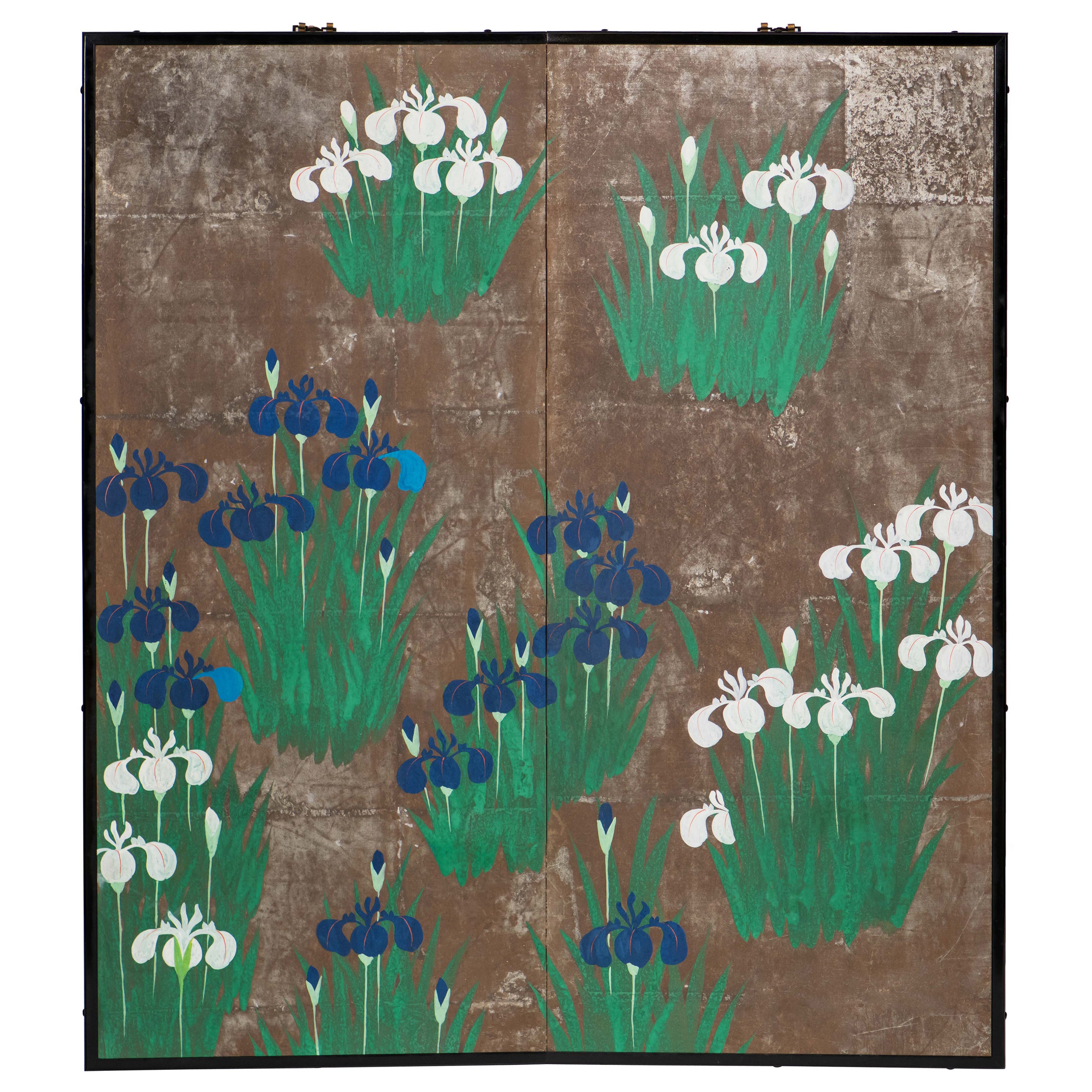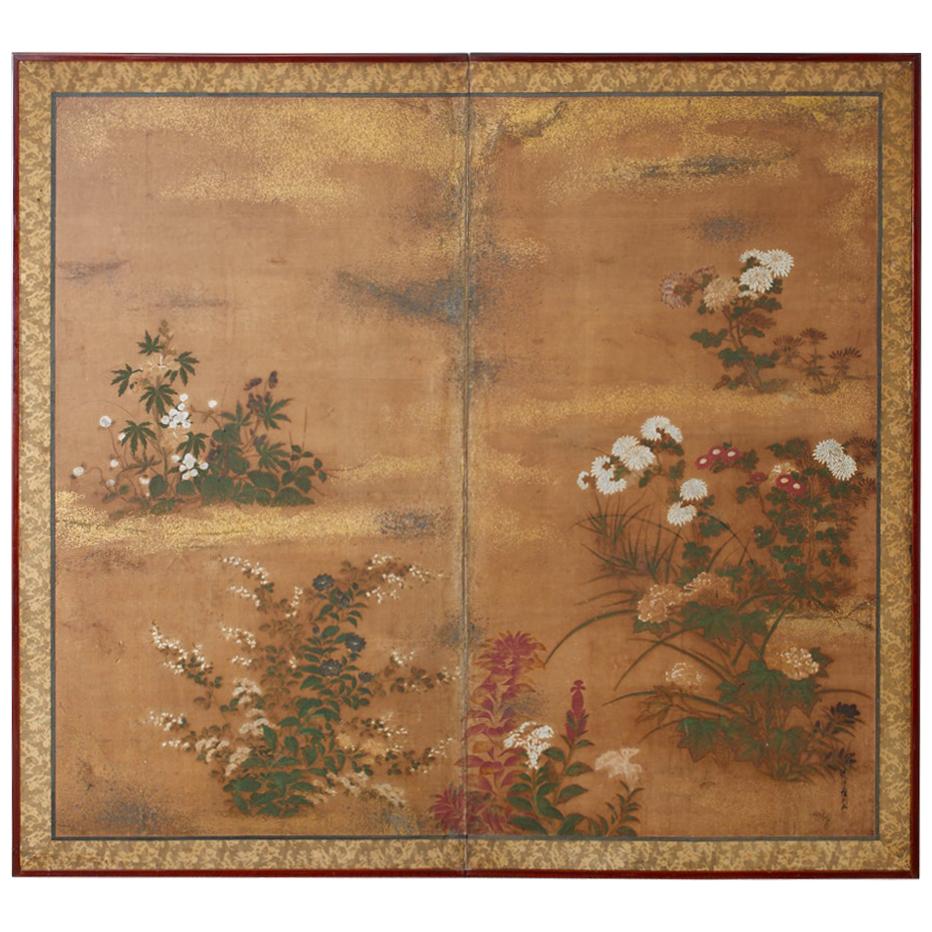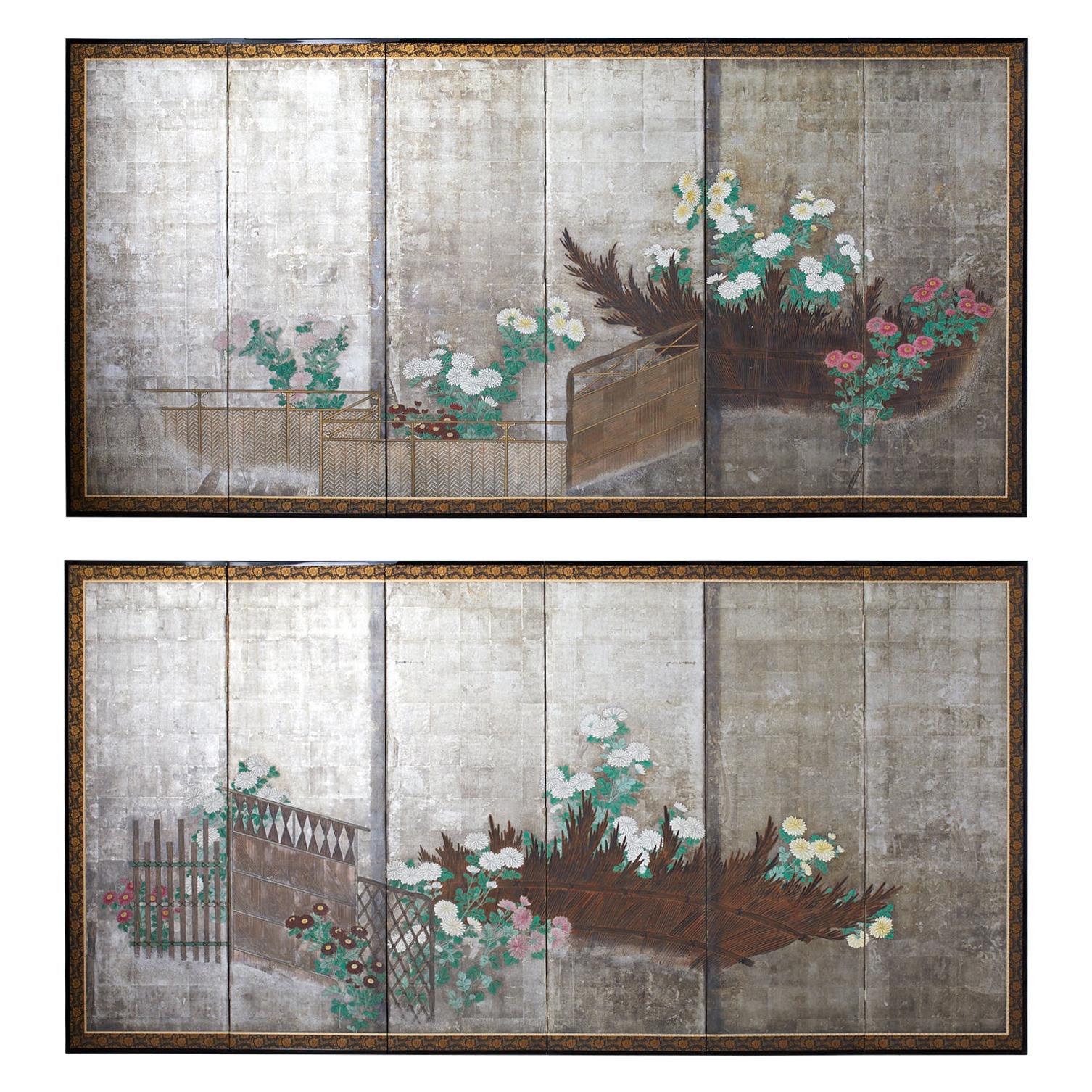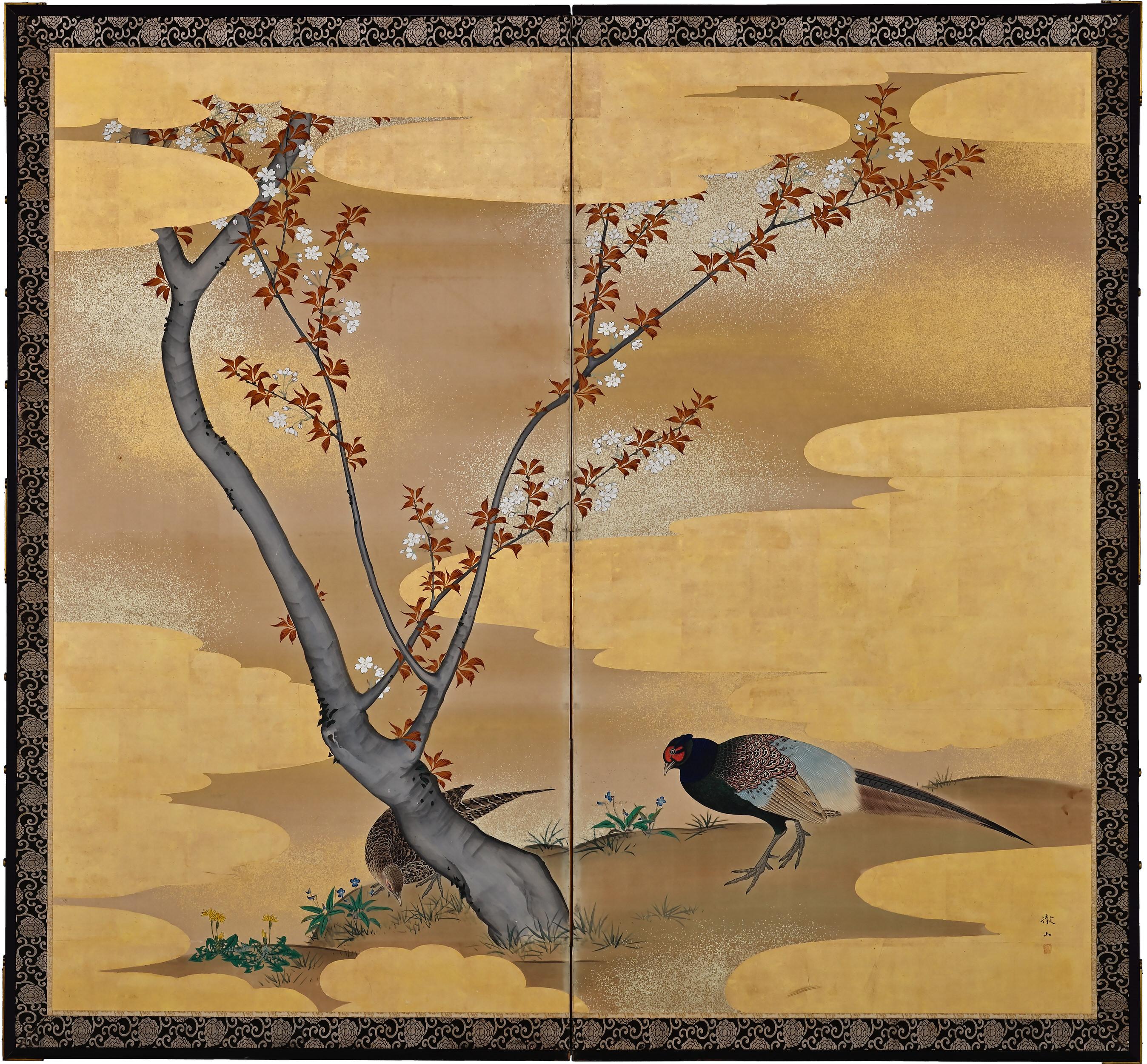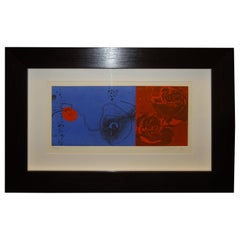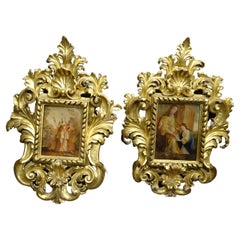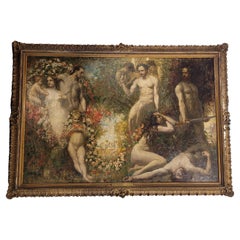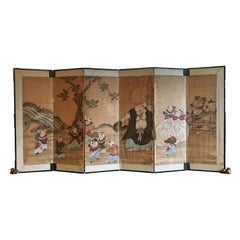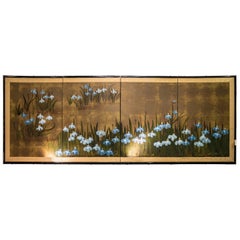
19th Century Edo Painted with Iris Japanese Signed Byobu Screen
View Similar Items
Want more images or videos?
Request additional images or videos from the seller
1 of 18
19th Century Edo Painted with Iris Japanese Signed Byobu Screen
About the Item
- Dimensions:Height: 29.53 in (75 cm)Width: 78.75 in (200 cm)Depth: 0.79 in (2 cm)
- Style:Edo (Of the Period)
- Materials and Techniques:
- Place of Origin:
- Period:
- Date of Manufacture:circa 1890
- Condition:Wear consistent with age and use.
- Seller Location:Valladolid, ES
- Reference Number:1stDibs: LU2943311170093
About the Seller
4.7
Gold Seller
These expertly vetted sellers are highly rated and consistently exceed customer expectations.
Established in 1990
1stDibs seller since 2017
126 sales on 1stDibs
More From This SellerView All
- 20th Century Korean School Red and Blue Etched, Signed Duck Sung KangBy Duck ShinLocated in Valladolid, ESBeautiful work of art by the contemporary Korean artist Duck Sung Kang, is a etched or mixed technique in blue, black and red color, a piece unique with...Category
1990s Korean Mid-Century Modern Paintings
MaterialsPaper
$518 Sale Price39% Off - 18th Century Spanish Painting on the Glass, Couple of Painting, Gildwood FrameLocated in Valladolid, ESAmazing pair of baroque cornucopias, with painted glass, s. XVIII, Spanish origin, Andalusian school (Córdoba) Outstanding pair of Cornucopias in carved wood and gilwood decorated w...Category
Antique 1780s Baroque Paintings
MaterialsGlass, Giltwood, Paint
$7,644 Sale Price / set20% Off - Belgian Painting Allegoric signed by P. SwyncopBy Philip SwyncopLocated in Valladolid, ESÓ/L “Peace and the arts are worth more than the brutal glory of weapons”, Philippe Swyncop, 1903 – Belgium, Flemish School Exquisite oil on canvas signed and dated by Belgian artist...Category
Antique Early 1900s Belgian Art Nouveau Paintings
MaterialsPaint, Canvas
- Ó/L France "Romantic landscape" Leo Deschamps, 1871 - SignedBy French House & GardenLocated in Valladolid, ESGorgeous Oil on canvas signed and dated by Leo Deschamps, 1871. The work shows a clear romantic component, with the representation of the dark forest, the mysterious character lookin...Category
Antique 1870s French Romantic Paintings
MaterialsCanvas, Wood, Paint
- 18th Century Oil on Canvas , Painting Italian Baroque Rubens and Van Dyck, 1790Located in Valladolid, ESWe offer a very interesting work of art, this ,s an excepcional Italian Baroque Oil /canvas , showing a Rubens and Van Dyck portrait, teacher and student together !!! Peter Paul Rub...Category
Antique 1790s Italian Baroque Paintings
MaterialsCanvas
$3,611 Sale Price63% OffFree Shipping - Belgian expressionist painting “Teaching to read”, Gustave Camus, 43 signedBy François Camus, ParisLocated in Valladolid, ESOne of a king , Exquisite and very important work of art !!!! Oil on canvas by Belgian painter Gustave Camus, signed and dated in the lower right corner. The work introduces us as sp...Category
Vintage 1940s French Expressionist Paintings
MaterialsCanvas, Wood, Paint
You May Also Like
- Japanese Six Panel Screen with Hotei, Edo Period, Early 19th CenturyLocated in Austin, TXA delightful Japanese six panel painted paper screen featuring the beloved figure Hotei, Edo Period, early 19th century. Hotei, called Budai in China, and known as the Laughing Buddha or Fat Buddha in the West, is considered to be an emanation of Maitreya, the Buddha of the Future. In Japan, he also holds a special place as one of the Seven Lucky Gods, being the god of fortune, and protector of children. He is always portrayed as a mirthful and corpulent man, dressed in loose robes that show off his round belly. He carries a sack with him, said to be filled with treasure. As the protector of children, he is often portrayed with them playing on or around him, as he is here. The children portrayed in this screen are dressed in Chinese style clothing...Category
Antique Early 19th Century Japanese Edo Paintings and Screens
MaterialsSilk, Paper
- 19th Century Japanese Edo Six Panel Kano School Landscape ScreenLocated in Rio Vista, CALate Edo period 19th century Japanese six-panel landscape screen featuring a cypress tree over a flowering hibiscus with a pair of hototogisu birds. Kano school painted with ink and ...Category
Antique 19th Century Japanese Edo Paintings and Screens
MaterialsSilk, Wood, Paper
- Edo Period 19th Century Japanese Folding Screen Six Panels Flowers on Gold LeafBy Rimpa SchoolLocated in Brescia, ITClouds of gold, water and many colorful flowers: Japanese six-panel folding screen by Rimpa School. Hand painted with rice mineral pigments and inks on rice paper and gold leaf.Category
Antique Early 19th Century Japanese Edo Paintings and Screens
MaterialsGold Leaf
- Japanese Edo Festival Screen, c. 1750Located in Chicago, ILThis 18th century folding screen is a stunning example of Japanese artistry. Beautifully painted with delicate brushwork, the evocative screen depicts a lively festival during the Ed...Category
Antique Mid-18th Century Japanese Edo Paintings and Screens
MaterialsPaper
- Set of 6 Large Kakemonos Japanese Mythology, 19th Century Japan circa 1800 EdoLocated in Beuzevillette, FRBeautiful set of 6 large kakemonos from 19th century Japanese mythology. Paper support with a canvas pasted on the paper Wonderful set that is part of Japan's history and beliefs When not hung, the Kakemonos are rolled up. circa 1800 - Japan - Edo Period A kakemono translates as "object to hang". In Japan this refers to a painting or calligraphy, most often done on silk or paper framed in a scroll that was intended to be hung on walls or in public lighting. This particular form, which allows them to be in a roll, dates back to the Tang dynasty in China (this would be related to the copying and preservation of ancient Buddhist texts). A Kami is a deity or spirit worshipped in the Shinto religion. A Yokai is a spirit, ghost, demon, or strange apparition from the creatures of Japanese folklore. Each of these kakemonos represents a unique story: - A kami, a Japanese deity, is shown painting a rainbow. Indeed, he performs the action with his right hand while his left hand holds a kind of basket with three pots of paint. This kami has a rather closed attitude. He is standing in a dark and tormented sky. Below this figure, 8 villagers are dressed in traditional Japanese clothes. Their faces are softened. They are not afraid of the elements made by the kami above their heads. - A character with an unreal look is holding a kind of jar with his two hands, which he spills on human figures above. This being is floating in the air, probably a character from mythology, perhaps Susanoo. Underneath, villagers on umbrellas. They are trying to protect themselves as best they can from what is falling on them. One of them is carrying baskets with fish on her shoulders. A character in the background is thrown forward and falls. - On this kakemono, the god Raijin, dressed in a white and blue outfit, strikes the sky with his two drum hammers to create lightning and its thunderous sound. Surrounded by Tomoe and a long red scarf, Raijin, enraged and with dishevelled hair, creates a dark and violent storm. The villagers seem frightened by this meteorological phenomenon. One of the villagers can be seen fainting in the arms of a man. This scene may seem chaotic, but Japanese legend tells us that once a field is struck by lightning, the harvest is good. - On this kakemono, we see an unreal-looking figure holding a fan, as if he were sweeping away the bad weather, or simply producing gusts of wind. He is probably the kami of wind and air, Shina tsu-hiko. The figures below him seem surprised by so much wind. An umbrella flies away on the left, the women hold their hair and scarf, the clothes are caught in the power of the wind, there is even a woman on the ground on the bottom left. - This Kakemono represents a short moment. This Raiju is a yokai (ghost spirit...Category
Antique 19th Century Japanese Edo Paintings
MaterialsPaper
- Hand Painted Japanese Folding Screen Byobu of IrisesLocated in 10 Chater Road, HKThe irises painting of this two-panel screen is hand-painted in watercolor, on squares of silver leaf which are applied by hand to the paper base over carefully jointed wooden lattic...Category
21st Century and Contemporary Chinese Paintings and Screens
MaterialsSilver Leaf
Recently Viewed
View AllMore Ways To Browse
Gold Byobu
Japanese Screens Floral
Antique Byobu
Gold Paper Byobu
Japanese Byobu Screens Antique
Screen With Iris
Japanese Painting Irises
Byobu Edo
Japanese Screen Irises
Japanese Screen Iris
Antique Screens Furniture
Antique Screen Antique Furniture
Asia Painting
Asia Screen
Japanned Screens
19th Century Screen
Paintings And Screens Asia
Silk Hand Paint



